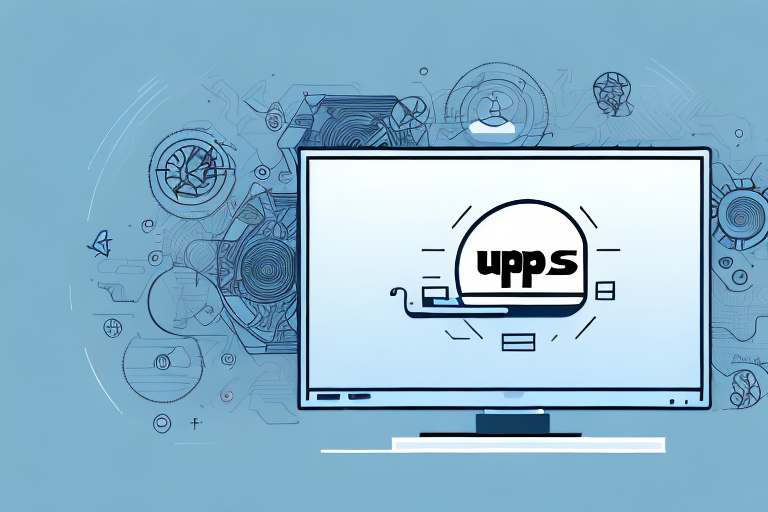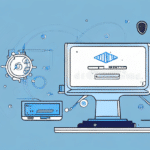What is the Remote Access Server (RAS) and Why is it Important?
The Remote Access Server (RAS) is a Virtual Private Network (VPN) that provides UPS employees and contractors with a secure connection to the UPS network. This secure platform allows authorized users to access various UPS applications and tools from remote locations, whether they are working from home or on the road. The RAS is crucial for enabling remote work and enhancing collaboration across different locations.
With the increasing trend towards remote work, especially highlighted by recent global events, the RAS plays a vital role in maintaining productivity and ensuring that employees have continuous access to the resources they need. According to a Statista report, remote work has significantly increased productivity by up to 47% in some organizations, underscoring the importance of reliable remote access solutions like the RAS.
Furthermore, the RAS ensures the security of sensitive information by providing an encrypted connection to the UPS network. This safeguards confidential data from potential cyber threats, maintaining UPS's reputation as a trustworthy and reliable company.
How to Log In to the RAS at UPS.com
Logging into the RAS is a straightforward process, provided you have the necessary credentials. Follow these steps to access the RAS:
- Navigate to UPS.com and click on the "Log In" button located in the top right corner of the homepage.
- Select "RAS Login" from the dropdown menu to proceed.
- Enter your UPS network ID and password in the respective fields.
- Click the "Log In" button to access the RAS.
If you encounter issues while logging in, ensure that you are using the correct network ID and password and that your internet connection is stable. For persistent problems, refer to the troubleshooting section below or contact your IT department for assistance.
Once logged in, the RAS provides access to essential UPS tools such as package tracking, shipment management, and training materials, enabling you to manage your tasks efficiently from any location.
Remember to keep your network ID and password secure. Use a strong, unique password and avoid sharing your credentials with others to protect your account and UPS systems from unauthorized access.
Troubleshooting Common Issues When Accessing the RAS
While the RAS is designed for reliability, users may occasionally encounter issues. Common problems include:
- Slow Connection Speeds: This can hinder your ability to access applications efficiently.
- Login Failures: Difficulty logging in despite correct credentials.
- Authentication Errors: Errors related to verifying your identity.
If you experience any of these issues, try the following solutions:
- Verify that your internet connection is stable and meets the necessary speed requirements.
- Ensure that you are entering the correct network ID and password.
- Clear your browser's cache and cookies to remove any corrupted data that might be causing issues.
- Disable firewall or antivirus software temporarily to check if they're blocking your connection.
For persistent issues, it's advisable to contact your IT department or UPS support. Additionally, be aware that some problems may stem from the RAS system itself, which may require system maintenance or updates. Regularly check for available updates or patches to ensure the RAS operates smoothly.
Understanding the Different Levels of Access Available Through the RAS
The RAS offers varying levels of access based on your role within UPS. Common access levels include:
- General Access: Basic access to essential applications and tools required for daily tasks.
- Vendor Access: Specialized access for vendors to manage specific interactions and transactions.
- Managerial Access: Enhanced access privileges for managers, enabling oversight and management of teams and projects.
Your assigned access level determines which applications and tools you can utilize through the RAS. It's essential to understand your specific permissions to effectively use the RAS without encountering access-related issues.
Access levels are subject to change based on your role within the organization. For instance, a promotion to a managerial position may grant you additional access, while a departmental change could alter your current permissions.
Maintaining the security of your login credentials is paramount. Always access the RAS from secure devices and networks to prevent unauthorized access and protect sensitive UPS data.
Tips for Staying Safe and Secure While Using the RAS
Security is a top priority when accessing the UPS network through the RAS. Implement the following best practices to ensure a secure session:
- Always Log Out: Ensure you log out of the RAS when finished to prevent unauthorized access.
- Use Strong Passwords: Create complex passwords and enable two-factor authentication for added security.
- Avoid Public Wi-Fi: Public networks can be insecure; use a private and secure connection whenever possible.
- Protect Your Credentials: Do not share your login information or write it down where others can access it.
Additionally, keep your computer and antivirus software up to date to defend against malware and other security threats. Be cautious when downloading files or clicking on links to avoid viruses or phishing scams. If you detect any suspicious activity or unauthorized access, report it immediately to the IT department.
How to Navigate the RAS Interface and Access Important Features
The RAS interface is designed for user-friendliness and ease of navigation. Upon logging in, you'll be presented with a dashboard that showcases your available applications and tools. To access these features, simply click on the corresponding icons. Key features available through the RAS include:
- Microsoft Outlook: Manage your emails and communications efficiently.
- CampusShip: A comprehensive tool for managing e-commerce shipments.
- UPS WorldShip: Software for managing and tracking shipments.
- UPS Marketplace: Access various business tools and resources.
Depending on your role within UPS, you may have access to additional custom applications or tools tailored to your specific needs.
Stay informed about updates and new features by regularly checking the "News" section of the dashboard. This section provides vital information regarding system maintenance, upcoming downtimes, and newly added tools or features to enhance your RAS experience.
Best Practices for Using the RAS on Mobile Devices or from Remote Locations
Accessing the RAS from mobile devices or remote locations requires adhering to specific best practices to maintain security and functionality:
- Use a Secure VPN Connection: Ensure your connection is encrypted to protect data integrity.
- Maintain Updated Antivirus Software: Protect your device from malware and other security threats.
- Create Strong, Complex Passwords: Use unique passwords that are difficult to guess.
- Be Mindful of Your Surroundings: Avoid accessing sensitive information in public or unsecured environments.
Additionally, regularly update your device's operating system and applications to patch security vulnerabilities. Always log out of the RAS after use, especially when on shared or public devices, to prevent unauthorized access. If you encounter issues or notice suspicious activity while using the RAS, promptly report them to your IT department or system administrator.
Configuring Your Computer or Device to Work with the RAS at UPS.com
Proper configuration of your computer or device is essential for seamless access to the RAS. Follow these steps to ensure your device is set up correctly:
- Verify System Requirements: Ensure your device meets the minimum system specifications for the RAS.
- Update Software: Keep your browser and operating system up to date to ensure compatibility and security.
- Enable Cookies: Allow cookies in your browser settings to facilitate proper session management.
- Disable Pop-up Blockers: Temporarily turn off pop-up blockers that may interfere with the RAS login process.
Additionally, a stable and strong internet connection is crucial for accessing the RAS without interruptions or disconnections. If you continue to experience issues after following these steps, contact UPS customer support for further assistance. They can provide additional troubleshooting steps and guidance specific to your situation.
Frequently Asked Questions About Accessing the RAS at UPS.com
Here are some common questions and answers related to accessing the RAS:
- Q: Can I access the RAS from any device?
- A: Yes, you can access the RAS from any device that meets the minimum system requirements and has a stable internet connection.
- Q: Do I need special software to use the RAS?
- A: You may need to install VPN software on your computer or device to securely connect to the RAS.
- Q: Can I access the RAS from outside the United States?
- A: Yes, you can access the RAS from outside the United States as long as you have a stable internet connection.
In conclusion, accessing the Remote Access Server (RAS) at UPS.com is an essential capability for UPS employees and contractors who need to work remotely. By following the outlined steps and best practices, you can securely and efficiently utilize the RAS from any location. For additional assistance or inquiries, please contact your IT department or UPS support.
**Security Reminder:** Accessing the RAS from public or unsecured Wi-Fi networks can pose significant security risks. Always use a secure and private network when accessing the RAS to protect your data and information. Additionally, always remember to log out of the RAS after your session to prevent unauthorized access to your account.




















